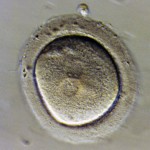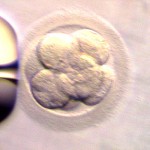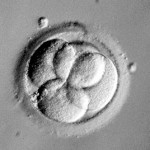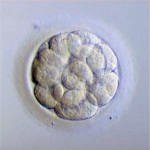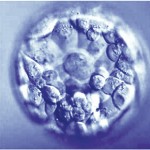Posts Tagged ‘embryo adoption’
The Embryo Bank Dilemma: Reviewing the Issues, Historical Perspectives and Offering Potential Solutions

Craig R. Sweet, M.D
Reproductive Endocrinologist
Practice and Medical Director
Embryo Donation International
Introduction
In my last blog, “Why Creating ‘McEmbryos’ is Just Plain Wrong,” I wrote about my concerns regarding the creation of an embryo bank at a California clinic. In this follow-up segment, I want to re-state the issues, discuss the past history of embryo banking in the U.S., provide a list of recently written thoughtful blogs on the topic, offer possible solutions to the dilemma and discuss where we should go from here.
A “Reader’s Digest” version
California Conceptions (CC), as outlined in Alan Zarembo’s L.A. Times article apparently combined donor eggs with donor sperm and divided the resulting embryos among a number of embryo recipients. This process is commonly called a “split or shared donor/donor cycle” but was called “embryo donation” by CC. Any embryos remaining, after the recipients received their allotment, would be cryopreserved and owned by CC.
The road was paved with good intentions
I feel that CC was really trying to offer a cost-affective alternative for patients and that its true intent was to keep the size of its embryo bank as small as possible. Even with good intentions, however, it is quite likely that the embryo bank will grow. In addition, to sanction the creation of a small embryo bank will almost certainly result in the creation of larger embryo banks across the country. These banked embryos for commercial use are what I called “McEmbryos.” There also needs to be a clear distinction between embryo banking for commercial use and the process of banking one’s own embryos (i.e., collecting through multiple IVF retrievals) to be used by individuals to build their families in the future.
I still have three main concerns:
- I do not feel that embryo banks are appropriate and could result in a plethora of unintended consequences.
- I feel that corporations, businesses or physician practices should not own embryos.
- Lastly, the process of a “split or shared donor/donor cycle” should be called “embryo creation” or, at the very least, not called embryo donation.
This has happened before
An article by Gina Kolata in the New York Times in 1997 revealed that “ready-made embryos” were already being made for “adoption.” Columbia-Presbyterian and Reproductive Biology Associates were named in the article as providing “premade” embryos to patients. According to the article, most of the embryos were created when donor egg recipients backed out of the process, but the egg donors still underwent the egg retrieval; their subsequent retrieved donor oocytes were combined with donor sperm. Lori B. Andrews, a professor of law at Chicago-Kent College of Law, was quoted as having concerns about the supermarket approach to embryos while the clinicians thought it wasteful to not retrieve and fertilize the donor oocytes if the egg donors were ready for the retrieval.
In 2007, Center for Genetics and Society Senior Fellow and UC Hastings Law Professor Osagie Obasogie wrote an op-ed for the Boston Globe about a Texas center that had created an embryo bank. He was concerned about the “Wal-Martization” of human embryos, a phrase similar to my “McEmbryos.”
In November of 2012, in response to the N.Y. Times article, Jessica Cussins of the Center for Genetics and Society wrote an excellent blog on the topic, also following-up on the 2007 article by Professor Obasogie. The Texas center was eventually closed and was the subject of an FDA investigation, which eventually found that the creation of an embryo bank did not fall under FDA jurisdiction. John Robertson, Esq., wrote an excellent commentary on the topic in the Bioethics Forum in that same year.
Embryo banks have come and gone, garnering media attention and criticism and I believe it is finally time to set some ethical standards of care about them.
How New York decided to handle the embryo bank issue
 Almost five years ago, the state of New York issued regulations for tissue banks and nontransplant anatomic banks, addressing the potential of creating embryo banks:
Almost five years ago, the state of New York issued regulations for tissue banks and nontransplant anatomic banks, addressing the potential of creating embryo banks:
Embryos shall not be created for donation by fertilizing donor oocytes with donor semen, except at the request of a specific patient who intends to use such embryos for her own treatment. [NYS 52-8.7(h)]
Embryos were not to be created to store in embryo banks but only created at the behest of a specific patient and subsequently owned by that patient. Simply modifying the statement above to include “… such embryos for his/her own treatment,” would address the issue adequately, with the sentence potentially used by various organizations as they hopefully set ethical standards of care.
Potential consequences to the creation of an embryo bank
I have been called an alarmist by some for bringing up what I feel are the following potential dangers of having embryos banks in the U.S:
- If a small embryo bank is allowed to flourish, then large embryo banks will most certainly follow.
- Poorly designed and reactive legislation may be created on the state or national level as there may be further calls to regulate what are perceived to be “unregulated IVF facilities.”
- “Personhood” advocates may become further emboldened to win personhood for the embryos to protect them from becoming “McEmbryos.”
I don’t think these unintended consequences are that farfetched and need to be considered carefully should embryo banks continue unchecked.
My reluctant decision to come forward
 About the last thing I wanted to do was to comment on another reproductive endocrine practice comprised of caring staff members dedicated to the care of their patients. I have been criticized for taking such a stand and accused of doing this purely for competitive reasons. In reality, I have been working with the American Society for Reproductive Medicine’s (ASRM) and the Society for Assisted Reproductive Technologies, (SART) since October of 2011, trying to elicit a set of guidelines prior to the writing of my blog. I far preferred to stay out of the limelight and let the “powers-that-be” decide what should be done next. When the L.A. Times article was published, it de-emphasized the ethical issues and potential unintended consequences of the CC embryo banking practice, so I felt I had no choice but to bring the topic up front and center.
About the last thing I wanted to do was to comment on another reproductive endocrine practice comprised of caring staff members dedicated to the care of their patients. I have been criticized for taking such a stand and accused of doing this purely for competitive reasons. In reality, I have been working with the American Society for Reproductive Medicine’s (ASRM) and the Society for Assisted Reproductive Technologies, (SART) since October of 2011, trying to elicit a set of guidelines prior to the writing of my blog. I far preferred to stay out of the limelight and let the “powers-that-be” decide what should be done next. When the L.A. Times article was published, it de-emphasized the ethical issues and potential unintended consequences of the CC embryo banking practice, so I felt I had no choice but to bring the topic up front and center.
Others responded to the discussion
Several other infertility professionals discussed the ethical issue in articles or blogs in the weeks following the L.A. Times piece. Excluding those that simply summarized the situation, I listed below what I think are some of the better blogs:
Supporting embryo banking
- Marni Soupcoff, Esq., “Marni Soupcoff on the sale of fertilized embryos: How much for the blastocyst in the window?”
Neutral to embryo banking
- Julie Shapiro, Esq., “Custom Made or Off The Rack?”
- Carole C. Wegner, Ph.D., “Embryos for Donation: Where are the ethical boundaries?“
- Elizabeth Swire Falker, Esq., “The Bizarre World of Embryo Banking. Where My Motherhood and Morality Meet”
Against embryo banking
- Andrew Vorzimer, Esq., “Get Pregnant With Built On Spec Embryos Or Get Your Money Back!”
- Jessica Cussins, B.A., “Embryos for Sale: ‘When You Want Them, How You Want Them, or Your Money Back”
- Sara R. Cohen, LL.B., “It’s not about the Money: Why we are So Concerned about a California IVF Clinic’s Anonymous Embryo Program”
- Mikki Morrissette, “Creating Embryos To Sell“
My thanks to all of the authors for taking the time to discuss the issue in an open forum.
Proposed remedies to the current dilemma
From the beginning, I have been offering remedies to the embryo bank dilemma. Although far be it from me to tell CC how to run its business, these are a few ideas I had to offer:
Only patients should own embryos-
No organization, corporation or physician practice should own embryos except in the most extreme circumstances, such as embryo abandonment. With embryo donation, it is most appropriate that the donor facility simply holds the embryos, with the donors still being able to request the return of their embryos, up to the point of transfer into the recipients, should a catastrophic occurrence take place, Attorneys refer to this as being a guardian, a conservator, or a temporary holder of goods. When presenting at the American Bar Association Family Law Section Spring conference in April of 2012, many of the attorneys there strongly supported the concept of conservatorship of the donated embryos over facility ownership.
If the embryos are returned to the donor, it seems appropriate to ask the donors to reimburse the embryo donation facility for all reasonable fees expended in originally obtaining the donated embryos and returning them to the donors. We have been running our embryo donation program this way for over 12 years and we encourage others to do the same.
Excess cryopreserved embryos could be owned by patients-
As best as I can surmise for CC, their business model is to recruit a number of embryo recipients and then transfer 1-2 donor/donor embryos into each recipient. I suggest that any remaining embryos be owned by one or more of the recipients and the entire cycle should not move forward until at least one patient agrees to take the extra cryopreserved embryos, should any exist. Extra charges could be levied to those that secure the remaining embryos. In this way, no embryos remain to create an embryo bank and the CC business model remains essentially intact.
Renaming the process-
The combination of donor sperm with donor eggs and then calling them donated embryos does not fit with the ASRM definition of embryo donation (Ethics Committee of the ASRM, 2009). Embryo creation is a far better term or “shared or split donor/donor cycle” is perhaps even more appropriate. Calling such embryos donated embryos debases the amazing gift that embryo donors provide when donating their embryos.
Who should set the standards?
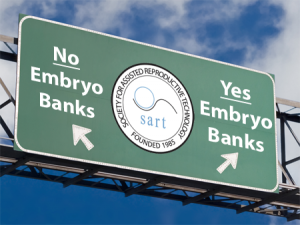 SART has reviewed the concerns stated in my previous blog but I don’t think it yet has arrived at a
SART has reviewed the concerns stated in my previous blog but I don’t think it yet has arrived at a
conclusion. My understanding is that the ASRM Ethics Committee is to take up the topic during the early months of 2013. As our main guiding societies, I believe they need to take the lead, develop position statements and provide ethical standard of care guidelines for all practices to use.
Once ASRM and SART have provided ethical standard of care guidelines, I will next request that the
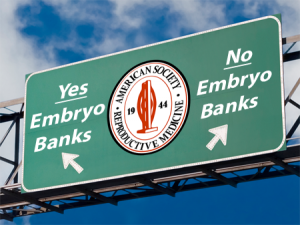
Canadian Fertility and Andrology Society and the European Society for Human Reproduction and Embryology (I am a member of both) consider the topic and respond with their own recommendations if they see fit.
It is not out of the realm of possibility that numerous societies could collaborate to form a consensus, such as they did when they banned the support and publication of human reproductive cloning research.
Summary comments
So where are we now on this dilemma? SART has discussed the topic but summary statements are pending. The ASRM Ethics Committee will soon meet, with the embryo bank topic apparently on the agenda. Assuming the Ethics Committee feels the topic has merit, I am uncertain how long it will take for them to release a position statement. I am hopeful that “the powers that be” will be attentive in finding a compromise that will allow CC to continue to offer their skilled reproductive services while preventing the formation of an embryo bank, no matter the size, further clarifying who should own embryos as well as the definition of embryo donation as it pertains to the current situation.
I don’t know about you but I don’t really like the idea of “McEmbryos,” or the commodification and “Wal-Martization” of human embryos. Patients should own them and decide their destiny. I am hopeful that our guiding societies will do just that – guide us on this sensitive and important topic.
Special thanks:
Thanks to Grace Centola, Ph.D., for helping to find the New York State statutes pertaining to embryo banking.
Thank you to Jessica Cussins for her blog on the topic, the reference by Professor Obasogie and her followup on the now closed Abraham Center for Life.
References:
Ethics Committee of the American Society for Reproductive Medicine. American Society for Reproductive Medicine: defining embryo donation. Fertil Steril. 2009 Dec;92(6):1818-9
.
LinkedIn Groups for Medical Professionals and Support Staff Who Share a Common Interest
Time is simply too scarce!
I will be the first to say that I don’t have enough time. Not enough time to work and certainly not enough time to play. With the advent of social media, I found my time even more precious. It is not that I spend my time socializing on these social networks. I am using it to communicate better with my patients and my peers. Unfortunately, each piece of the time pie just keeps getting cut smaller with the smallest segment seemingly used for sleep.
Why not Facebook and Twitter?
Now, I will be honest with you. I am also uncertain if there is true value with my being on Facebook and  Twitter. Yes, I try to post interesting information for my patients and peers and tweet witty phrases for all that actually follow what I might say. But I can’t help but feel that everyone, including myself, is overwhelmed with the vast sea of distractions that follow us on our computers, phones and iPads, 24/7 and wherever we go.
Twitter. Yes, I try to post interesting information for my patients and peers and tweet witty phrases for all that actually follow what I might say. But I can’t help but feel that everyone, including myself, is overwhelmed with the vast sea of distractions that follow us on our computers, phones and iPads, 24/7 and wherever we go.
What were the alternatives?
Let me digress for a discussion on what I did when a difficult issue cropped up in my world of embryo donation. I could certainly talk to my staff, e-mail my connections or actually use the old-fashioned phone to toss the dilemma around with my peers, but connecting wasn’t at all easy. It is hard to catch people at the right time and plus I couldn’t get more than one or two opinions over a few days.
E-mail list services (commonly called “listserv”) are interesting entities, reminding me of on-line bulletin board of days gone by but significantly more difficult to follow. While listservs are really useful to target a group of people with similar backgrounds, it wasn’t necessarily the best way to reach people of varying experiences and professionals in different fields that might have a perspective to add. Don’t get me started on how difficult they can be to read as many simply click reply re-copying all that was on the e-mail to start. When a number of people do this over a short period of time, the e-mail gets very long and very difficult to decipher important information from the din of republished material. They are probably the second best option but they simply are not that easy to work with.
Why LinkedIn?
 So, please understand that I was skeptical when I began to play with LinkedIn. Setting up my profile wasn’t complex but I wondered how useful it would be compared to my more comprehensive C.V. The problem was that patients and peers had to search for my C.V. whereas LinkedIn was providing the basics with the click of a mouse. OK, that was a plus but what about the rest of LinkedIn?
So, please understand that I was skeptical when I began to play with LinkedIn. Setting up my profile wasn’t complex but I wondered how useful it would be compared to my more comprehensive C.V. The problem was that patients and peers had to search for my C.V. whereas LinkedIn was providing the basics with the click of a mouse. OK, that was a plus but what about the rest of LinkedIn?
I knew that LinkedIn was described as the “Facebook for business” but I couldn’t really see my peers trolling LinkedIn as some are glued to Facebook. Certainly, if you are looking for an employee or for a job, it might be a great place to start, but what was the use of making all those connections when I wasn’t really doing anything with them? Did I really need to enter a popularity contest and see how many connections I could make? Really, not my style.
Why LinkedIn Groups?
Deciding I needed to create a social media forum where I might be able to coax others interested in the professional aspects of embryo donation to join me, I turned to LinkedIn Groups. LinkedIn Groups seemed to be ideal with it’s easy to read and understand format. I created the Embryo Donation Network.
There are strengths with LinkedIn Groups
My intention with the group was akin to the goal of large national/international infertility meetings where all types of professionals with similar interests converge, but to do this within the comfort of the professionals’ home or offices.
- I am able to screen the members, keeping only professionals in the group and politely redirecting patients to a host of other online information.
- I can utilize the many links I have created over the months, asking reproductive endocrinologists, reproductive attorneys, medical ethicists, embryologists, IVF coordinators, mental health professionals and administrative support staff who might have a potential interest in embryo donation to join the group.
- Polls are quick and easy, much easier that Constant Contact or even MailChimp from my perspective.
- I can control posts if desired or simply let the members direct the conversations, posing tough questions that we need each other to help figure out.
There still are some weaknesses with LinkedIn Groups
While I am still learning how to use the LinkedIn Group, there seems to be some sticking points that I haven’t quite figured out how to completely remedy.
- I can’t underline or bold words or sentences or easily add photos when I think greater emphasis is needed.
- It is not always easy to get the conversations started. I sometimes have to post a question a second time for someone other than myself to continue the conversation.
- It is too easy for the same talking heads to lead the group, and that certainly includes myself! Motivating other members is a challenge.
- While balancing the need for a continuous conversation without overwhelming the members, unless you have an active moderator, most groups seem to die a slow death.
- Unless I am missing something, I can’t seem to close and archive some conversations that I feel should be shelved for now.
- Some of the groups are just pure self-promotion. I’ve made it clear that posts such as these will have to be tossed into the Job section, the Promotion section or simply be removed. I think this is the biggest turnoff to the LinkedIn groups these days.
My eventual wish list for LinkedIn
Perhaps someone from LinkedIn will actually read this blog and consider the weaknesses listed above and the wish list I created below:
- If someone joins my group, it should be easier for me to add them to my network. As it stands, I have to know their e-mail address to connect to them and I don’t have this on many of my group members.
- It would be truly wonderful to have a bunch of live talking heads discussing issues though live audio and perhaps video feeds. Creating such a meeting place would be invaluable.
- Some sort of detailed analytics report would be useful for trying to see what topics created the greatest level of discussion. One has to track this by hand to see the patterns and Google Analytics does this with more ease for websites.
The Embryo Donation Network is the best method I have found to communicate with professionals who have a similar interest
Where else could we get some amazingly accomplished people into embryo donation conversations? Where  else can you get so many professionals to pay close attention to a single topic for any length of time? Since launching early this year, we now have approximately 180 members and continue to grow. Compared to the LinkedIn groups for RESOLVE that has 843 members and ASRM that has 516, I think we are doing just fine. And it is not really about numbers, it is about the quality of the discussions among experienced professionals.
else can you get so many professionals to pay close attention to a single topic for any length of time? Since launching early this year, we now have approximately 180 members and continue to grow. Compared to the LinkedIn groups for RESOLVE that has 843 members and ASRM that has 516, I think we are doing just fine. And it is not really about numbers, it is about the quality of the discussions among experienced professionals.
So, if you are a professional interested in embryo donation, especially its ethical, medical, psychological and legal aspects, then the Embryo Donation Network is for you. Please join LinkedIn, change your search category (found in the upper right corner of your LinkedIn home page) to “groups” and type in “embryo donation” to find the Embryo Donation Network. From there, simply click, request to join the group and you will be added quickly. I promise not to overwhelm the members; my intent is to post only one general topic per week. The only perquisite is that you are truly interested and, hopefully, somewhat willing to jump right into the fray and interact with other professionals who share your interest.
Do I miss posting as many messages on Facebook for my patients and peers? Not really, as I am not naturally a social animal. I’d rather read an article than discover someone liked my last post or if we have created any new connections. Have my number of tweets decreased on Twitter? You bet. Have the number of articles I commented upon in Digg fallen? Certainly. Am I sleeping a bit less? Inevitably so. But what has vastly improved is my ability to reach out to some highly skilled professionals and pick their brain when mine is a bit confused. I also hope that I may, in some small way, be teaching others about the amazing world of embryo donation one topic at a time. Come and join the fun – join LinkedIn’s Embryo Donation Network!

Craig R. Sweet, M.D
Reproductive Endocrinologist
Practice and Medical Director
Embryo Donation International
And more importantly….
Moderator, Embryo Donation Network
Federal Funding of Embryo Donation and “Embryo Adoption:” Is it time for the Federal Government to Reconsider Its goals?

By: Craig R. Sweet, M.D.
Reproductive Endocrinologist
Info@EmbryoDonation.com
The “Defunding” of a Government-Supported Program
On March 2, 2012, it was reported that the Obama Administration wanted to defund the embryo donation/adoption awareness federal program that has been run by the Office of Population Affairs, part of  the U.S. Department of Health and Human Services. Spokespeople from Nightlight Christian Adoptions, the National Embryo Donation Center and Snowflakes Embryo Adoption programs were quoted as opposing the defunding decision. It should be noted they all had received or were receiving funding from the federal program, so their reactions were not unexpected.
the U.S. Department of Health and Human Services. Spokespeople from Nightlight Christian Adoptions, the National Embryo Donation Center and Snowflakes Embryo Adoption programs were quoted as opposing the defunding decision. It should be noted they all had received or were receiving funding from the federal program, so their reactions were not unexpected.
Initially, the federal program was created in response to President Bush’s push to use cryopreserved embryos to create families and steer away donations from human embryonic stem cell research. Since 2002, over 22 million dollars has been spent by the federal government on the awareness programs.
The Predictable Response
Certainly during an election year, the firestorm that followed was probably predictable.
There were calls stating that the Obama Administration was “pro-abortion,”
I’ve never met such a person in my entire life, although many have been “pro-choice.”
Congressman Chris Smith, a New Jersey Republican, was quoted a saying, “Assertions that leftover embryos are better off dead so that their stem cells can be derived is dehumanizing and cheapens human life.”
Come on now… this decision does not mean that all cryopreserved will be destroyed. It simply means that all of us who are dedicated to the concept of embryo donation need to work harder and smarter with non-federal funds to make certain patients are aware of the embryo donation option.
Mailee Smith, staff counsel at the “pro-life” Americans United for Life, was quoted, “What we’re seeing is the elimination of the moral solution.”
Nothing could be further from the truth. Many programs throughout the country offer embryo donation and will continue to do so long after federal funding disappears.
Could we all just trim the hyperbole a bit?
Is it a Coincidence that the Phrase “Embryo Adoption” Predated the Personhood Amendments?
I suggest paying less attention to the hype and instead examine the realities of the ways that federal funding can influence the competitive free market with unintended consequences. The propagation of the term “embryo adoption” sprouted the appearance of the personhood amendments and legislation, which are focused on declaring that eight-cell early embryos are people. The consequences of these enactments are far reaching, including monumental legislative changes, restrictions on the care of women, and severe restrictions to the treatment of the infertile patient. (See my previous blog on the Mississippi Amendment here.)
Not Sour Grapes but Concerns Regarding Discrimination
Let it be understood that Embryo Donation International (EDI) applied last year for the federal funding in question, but we were not awarded a grant. In partnership with professors at Florida Gulf Coast University, we proposed thirteen different fresh and innovative projects to increase awareness, as well as provide embryo donation services. While we were disappointed, we were not surprised that the organizations, for the most part, receiving funding had been granted it before and this was our first submission. EDI was not previously dependent on the funding so there were no significant changes in our day-to-day operations. The projects are slowly being rolled out, funded instead by SRMS/EDI.
What bothered us was that over the years some of the organizations receiving the bulk of the funding were faith-based and discriminated against some patients. While the projects themselves were potentially more neutral, the organizations were not. Health and Human Services (HHS) apparently looked only at the proposals in determining the awards, making the awarding of grants potentially flawed.
The grant process essentially compartmentalized the proposals. If an organization provided certain services, which the federal government did not fund directly, but the organization was awarded a grant to provide other services, the government essentially compartmentalized the grant money separate from the procedures it didn’t directly support. I understand the concept but do not feel the grant committees should have made the decision based only on the grant proposals. They also needed to take into account the overall views and beliefs of the organization requesting funding. There needs to be times when the government must look at the trees and not just the leaves.
I believe there were instances where the funds should be withheld. The funded organizations should have provided a minimum standard of practice guidelines in line with the non-discrimination clauses outlined in the grants. Entities awarded the grants should not have discriminated with regards to race, religion, ancestry, gender, marital status or sexual preference.
 Being a faith-based embryo donation/embryo adoption organization also directly or indirectly excludes some patients, making it uncertain if the federal government should directly support such facilities, especially taking into account the separation of church and state. I know that faith-based embryo donation/embryo adoption entities were strongly supported by past administrations but should a neutral organization that does not discriminate and makes all faiths feel totally welcome be placed at a higher priority now? Is this more ethical and fair? Is this a better use of the shrinking tax dollars? Is it time for the federal government to reconsider their goals?
Being a faith-based embryo donation/embryo adoption organization also directly or indirectly excludes some patients, making it uncertain if the federal government should directly support such facilities, especially taking into account the separation of church and state. I know that faith-based embryo donation/embryo adoption entities were strongly supported by past administrations but should a neutral organization that does not discriminate and makes all faiths feel totally welcome be placed at a higher priority now? Is this more ethical and fair? Is this a better use of the shrinking tax dollars? Is it time for the federal government to reconsider their goals?
If both discrimination and faith-based issues were actually taken into account, many of the organizations discussed here never would have received the original federal funds.
It is not that I want these organizations to go away. Quite the contrary, they often do a great job, provide excellent services and fill a much-needed niche. Their funding should, however, be through sources other than the federal government because of the bias inherent to their provision of services.
Can the Government Afford Providing the Grants?
Understanding that the U.S. is running a severe deficit, when are we ever going to be  willing to make difficult decisions? How are we ever going to get control of the budget if we can’t trim existing programs that may serve an important few when the many need assistance? We all need to look at the big picture and understand that “business as usual” is not practical in the current economic climate. I may be falling on the sword a bit, but shouldn’t we all be willing to sacrifice? Hey, I’m all for creating little taxpayers to help pay off the deficit. I’m just not sure that we can afford to do so through a government in the red. To do so with organizations that discriminate makes absolutely no sense at all.
willing to make difficult decisions? How are we ever going to get control of the budget if we can’t trim existing programs that may serve an important few when the many need assistance? We all need to look at the big picture and understand that “business as usual” is not practical in the current economic climate. I may be falling on the sword a bit, but shouldn’t we all be willing to sacrifice? Hey, I’m all for creating little taxpayers to help pay off the deficit. I’m just not sure that we can afford to do so through a government in the red. To do so with organizations that discriminate makes absolutely no sense at all.
In Summary
If federal funding is to continue, it needs to be provided to organizations, and not necessarily my own, which do not discriminate and are not faith-based. In addition, giving “embryo adoption” programs federal funds so they can support personhood amendments should be reconsidered. Having the government eventually spend even more money and time contesting the amendments and statutes in court defies understanding. Perhaps the congressional appropriations committees, who will make the final decision regarding federal funding, will take the concepts of non-discrimination and non faith-based alternatives into account and fund the programs with new and fairer goals.
Rest assured, unlike the rhetoric would lead one to believe, embryo donation is here to stay, regardless of the decisions of Congress and the grant process. How do we know? We’ve been providing the service for 11 years and will continue to do so in the years ahead, without cessation, as long as there are cryopreserved embryos available to donate.
Craig R. Sweet, M.D.
Reproductive Endocrinologist
Embryo Donation International
www.EmbryoDonation.com
How Does EDI Decide to Exclude Potential Embryo Recipients?

By: Craig R. Sweet, M.D.
Reproductive Endocrinologist
Info@EmbryoDonation.com
Introduction
There are times when we need to exclude patients when they contact Embryo Donation International (EDI) to become an embryo recipient. While not an easy decision or discussion, I thought it was time to explain our rationale when needing to, at least temporarily, exclude potential embryo recipients.
In a way, the blog we recently wrote on the ranking of potential embryo recipients dovetails into this discussion. In this blog, we described what we thought was an appropriate ranking system prioritizing those patients with the greatest need.
Our discussion here focuses on the patients who apply but who are never ranked because EDI feels they should be excluded because of any number of the reasons described below.
Excluding Potential Embryo Recipients Due to Maternal Risks
The decision to exclude a patient from embryo donation is really, in some ways, no different than the decision we have to make with other infertility patients.
Relative contraindications to pregnancy
There are occasions when certain conditions should probably be corrected before pregnancy takes place since pregnancy will often worsen or complicate the condition. Examples may include gallbladder disease and ovarian cysts or surface uterine fibroids that are five+ centimeters in average diameter. Treating these problems once pregnancy is established is very difficult, so it may be best to control the situation while we still can and correct the potential problem first before conception.
Strong contraindications to pregnancy
Patients who would be at significant risk of illness or even death should pregnancy occur include those suffering from cancer, poorly controlled systemic lupus, pulmonary hypertension or diabetes, to name a few important disease states.
Infrequently we have to be a bit paternalistic and say “no,” understanding that we may cause great harm to our ill patients by assisting them to become pregnant.
Excluding Potential Embryo Recipients Due to Risks to the Embryo/Fetus
The trickier decisions involve those patients where the potential for delivery of a live child is measurably reduced. Patients with decreased embryo implantation rates and those who are at an increased risk for spontaneous loss or at an increased risk for premature delivery/stillbirths fall into these categories.
Some of these examples are listed below:
|
Situation |
Decreased implantation |
Increased risk of spontaneous loss |
Increased risk of significant prematurity or stillbirth |
| Uterine cavity distorting fibroids or polyps |
x |
x | |
| Uterine fibroids 2+ cm in size located within the uterine muscle |
x |
x |
|
| Damaged uterine cavity with a thin endometrial lining |
x |
x |
|
| Hydrosalpinx where tubal fluid may flow back into the uterus |
x |
x |
|
| Unexplained recurrent pregnancy loss |
x |
||
| Uncontrolled medical conditions (e.g., hypertension, diabetes, renal disease, autoimmune disease) |
x |
x |
|
| History of an incompetent cervix |
x |
x |
|
| Persistent history of premature births |
x |
||
| Untreated pre-diabetes |
x |
x |
x |
| Obesity or morbid obesity* |
x* |
x* |
x |
* The effects of obesity or morbid obesity with regards to implantation rates and spontaneous loss rates are controversial.
The “Grey” Exclusion Zones
Out of the list above, one of the most difficult categories involves those patients who are obese or morbidly obese and their  potential reduction in implantation rates and increased spontaneous loss rates. Some articles show a significant reduction in implantation rates and an increased risk of spontaneous loss while others show contradictory results. While a comprehensive review of this topic goes beyond the scope of this blog, I believe there are a few things we understand:
potential reduction in implantation rates and increased spontaneous loss rates. Some articles show a significant reduction in implantation rates and an increased risk of spontaneous loss while others show contradictory results. While a comprehensive review of this topic goes beyond the scope of this blog, I believe there are a few things we understand:
- Patients with glucose intolerance and insulin resistance, regardless of weight, are at a higher risk of developing gestational diabetes during pregnancy and the potential complications associated with this disease.
- Patients who are obese or morbidly obese are clearly at risk during pregnancy for a host of issues, including preeclampsia, hypertension, large for gestational age babies, prematurity, stillbirths, gestational diabetes, Cesarean section deliveries and the risks associated with these surgeries.
There is only one preliminary study specific to embryo donation that did not show a consistent decrease in pregnancy rates as weight increased (Body Mass Index: BMI) but the trends were present suggesting an average reduction in overall pregnancy rate of 33% for obese and morbidly obese patients with a BMI of 30 or more. (Finger R., et al. 2011) We await the detailed publication of this important study to better understand this issue.
Weight loss is terribly difficult for patients and takes a great deal of time. Sometimes surgery, such as a gastric band or intestinal bypass surgery, may be the best option. These issues are the thorniest to decide, with pressure applied by potential embryo recipients who do not fully understand how their weight may contribute to failed implantation or pregnancy loss, though it certainly places them and their unborn offspring at greater risks during the pregnancy.
Surrogacy as an Option When Material/Embryonic/Fetal Risks are Too High
 Some of the issues discussed in this blog can be treated. Then the potential embryo recipient can be moved out of the exclusion zone. Some of these issues are not treatable, so options such as surrogacy and/or adoption may be better alternatives.
Some of the issues discussed in this blog can be treated. Then the potential embryo recipient can be moved out of the exclusion zone. Some of these issues are not treatable, so options such as surrogacy and/or adoption may be better alternatives.
While some embryo donation programs refuse to allow surrogacy, EDI feels this is an excellent alternative. For example, is it ethical for EDI to ask that the patient with asymptomatic uterine fibroids, which may significantly reduce implantation or increase pregnancy loss rates, be surgically removed in a patient who fears surgery? Is gestational surrogacy a better alternative?
In Summary
We do not mean to be cruel or judgmental but are forced to make difficult decisions regarding the acceptance or exclusion of embryo recipients. We owe it to the potential embryo recipients to give them the best chance possible, understanding there are medical conditions that may severely impair their chances for success. We owe a debt of gratitude to the embryo donors and take seriously the responsibility of finding a healthy patient for their embryos hoping to maximize the chances that the embryos will survive and thrive. Lastly, and certainly not least, we owe it to the embryos to make certain they have the best chance possible.
Unfortunately, we sometimes have to make the difficult decision to exclude a potential embryo recipient, at least temporarily, until the medial concerns are remedied or certainly improved.
References:
Finger R, et. al. Obesity and the ability to achieve pregnancy in embryo donation. Fertil Steril 2011;96(3)-S172.
Do These Donated Embryos Make the Grade?
Embryo Grading Made Easy For Embryo Donors and Embryo Recipients
Part 1 of a 3 part mini-series by Corey Burke, B.S., C.L.S. & Laboratory Supervisor and Reproductive Endocrinologist Craig R. Sweet, M.D.
Embryo grading is an important factor for both donors and recipients. Potential embryo donors want to know if we will accept their embryos for donation since part of our decision is based on the grade of their embryos. Likewise, potential embryo recipients want to know how likely the donated embryos are to survive thawing and if they are of good enough quality to build their family. Part of our estimation of success depends on the grade of the embryos.
We wish this process could be easier since there is no standardized system used in all embryology laboratories to grade embryos. Furthermore, the grading of embryos is somewhat subjective so one embryologist may grade an embryo
somewhat differently than a colleague.
Embryo grading is an imperfect process; poorly graded embryos may occasionally result in ongoing pregnancies and beautiful looking embryos may not implant and grow. Poorer graded embryos will not necessarily result in an abnormal child; they simply seem to implant and grow less frequently.
So, the appearance and grading of an embryo is an imperfect estimate of the quality of the embryo as well as the embryo’s true potential. It is, however, the best way we have to visually estimate the implantation and live birth rate of a given embryo. We will now examine one of the more common methods used to grade embryos.
When are embryos graded and cryopreserved?
Embryos are usually graded and frozen at three specific stages with “Day 0” being the day of retrieval and fertilization:
| Age of Embryos | Day 1 | Day 3 | Day 5-6 |
| Common terminology | 2PN (pronuclear stage)
2 cell stage |
Embryos are 6-10 cells | Morula &
Blastocysts |
| Grading importance | Grading not available | Grading relatively important | Grading very important |
| How often these are sent to EDI? | Rarely sent | 40% of EDI embryos | 60% of embryos |
Embryos cryopreserved immediately after fertilization are confirmed early on Day 1 (the 2PN (pronuclear stage), but aren’t advanced enough to be consistently graded. Freezing embryos on Day 1 is quite infrequent unless we are certain there will not be an embryo transfer. Accordingly, these embryos are rarely sent to EDI for embryo donation.
Grading Day 3 Embryos
Day 3 embryos are graded on cell number, the amount of cellular fragmentation and the symmetry of the embryo.
Cell Number
Most Day 3 embryos will be comprised of 6-10 cells called blastomeres. Embryos with too few blastomeres may not be healthy, so we prefer at least 7-8 at this stage. Embryos with fewer cells may not be healthy growing very slowly or may have stopped growing entirely commonly called “cell block”.
Fragmentation
Fragments may be found in many of the embryos, which are “bits” of cells that break off from a blastomere. We prefer as little fragmentation as possible. Fragmentation is estimated as the percentage of fragmentation volume compared to the total embryo volume and is converted to a letter grade in the following way:
- 0 % = A
- 1-10% = B
- 11-25% = C
- >25% = D
A large amount of fragmentation may be caused by death of one or more of the blastomeres. The higher the fragmentation, the lower the quality of the embryo & letter grade and the less likely that the embryos will survive thawing. Embryos with high fragmentation rates implant less frequently when transferred fresh or when thawed.
Symmetry
Symmetry of the embryo refers to the shape of the individual blastomeres and the overall shape of the embryo. The blastomeres should all be very similar in size and generally round in shape. The scale used to grade symmetry is
- Perfect = A
- Moderately asymmetric = B
- Severely asymmetric = C
Severe blastomere asymmetry (i.e., large and small blastomeres in the same embryo) reflect nuclear/chromosomal and cytoplasmic problems suggesting the embryo is less healthy than desired. There is supporting evidence that blastomere symmetry is important and reflects overall health of the embryo. Interestingly, the overall symmetry of the embryo (round vs. oval) is of uncertain importance with some very “funny looking” embryos resulting in beautiful and healthy children.
Putting it All Together for Day 3 Embryos
For Day 3 embryos, the order of grading is the “number of cells (#c),” “fragmentation grade” and “symmetry grade”. For example:
- 7cAA = 7 cells with no significant fragmentation and perfect symmetry
- 8cBA = 8 cells with 1-10% fragmentation and perfect symmetry
- 6cBB = 6 cells with 1-10% fragmentation and moderate asymmetry.
Grading Day 5 Embryos
More advanced embryos are graded and potentially frozen on Day 5 or Day 6. These are generally described as morula or blastocysts.
Day 5 Morula Embryos
Morula embryos are difficult to grade as the cells combine, forming essentially a ball of cells that can’t really be categorized in any way other than descriptive terms:
- Morula (early)
- Compacting morula (more advanced)
While some facilities only occasionally cryopreserve Day 5 morula embryos, it is thought that the survival and implantation rates of these embryos may be slightly reduced but they are still quite reasonable, suggesting that they should not be discarded. Day 6 morulas are probably delayed in growth or may have stopped growing, may not be viable and are infrequently cryopreserved.
In order to balance the possible reduced implantation rates, it is common that more morula embryos are thawed and transferred in order to achieve success.
Day 5 Blastocyst Embryos
Day 5 blastocyst embryos are the most advanced embryos we see in IVF. These embryos are formed within 24 hour of actual implantation. Trying to grow embryos beyond this point is
technically difficult, as the embryos usually don’t survive. In addition, the window of time for implantation seemingly closes beyond Day 5 or early day 6. For example, transfer on Day 7 will rarely result in implantation. So, it simply makes more sense to transfer and/or freeze blastocysts rather than trying to grow them any further.
Along with descriptive measures, more objective grading is attempted through evaluation of the cellular expansion, the inner cell mass (which eventually becomes the fetus) and the quality of the outer cell mass called the trophectoderm (which eventually forms the membranes and placenta).
Expansion
As the embryo advances in growth, a cavity called the blastocoel fills with fluid. As the cells continue to divide and the fluid collects, the embryo expands and eventually escapes its outer covering called the zona pellucida. The blastomeres continue to group together wherein the individual cell cannot be counted. As the Day 5 embryo expands, differentiates and escapes the outer zona pellucida, the grade increases numerically from 1-5.
| Grade | Description | Physiology |
| 1 | Early Blastocyst | Starting to form a fluid-filled space in the middle (Blastocoel). Grading the embryo is difficult here. |
| 2 | Full Blastocyst | Blastocoel forms and inner cell mass is now distinguishable. Grading can be done from this point forward. |
| 3 | Expanded Blastocyst | Blastocyst is starting to expand in size thinning the outer covering, the zona pellucida |
| 4 | Hatching Blastocyst | Blastocyst is starting to hatch out of the zona pellucida. |
| 5 | Hatched Blastocyst | Blastocyst is fully hatched and now ready for implantation into the uterine wall. |
Inner Cell Mass (ICM)
As the blastomeres compact to form the inner cell mass (ICM), this early fetal tissue is graded on a A-D scale:
| ICM Grade | Description |
| A | ICM with total compaction |
| B | ICM still compacting |
| C | Reduced ICM |
| D | Poor with dying cells |
Trophectoderm (TE)
The outer cells of the trophectoderm (TE) also reflect the overall health of the embryo and are graded in an A-D scale.
| TE Grade | Description |
| A | Numerous cells forming cohesive layer |
| B | Few but healthy large cells forming a loose epithelium |
| C | Few cells present often with asymmetric distribution |
| D | Poor with degenerating/dying cells |
Putting it All Together for Day 5 Embryos
For Day 5 embryos, the order of grading is “expansion,” “inner cell mass” and “trophectoderm.” For example:
- 1 = Early blastocyst is unable to be easily graded with respect to ICM or TE as these haven’t separated well enough yet.
- 2BB = Blastocyst with partial ICM compaction with loose, large trophectoderm cells
- 3AB = Expanding blastocyst with total compaction of ICM and with loose, large trophectoderm cells
- 4AA = Hatching blastocyst with excellent ICM & trophectoderm cell layers
- 5AA = Fully hatched blastocyst with excellent ICM & trophectoderm cell layers
Day 5 embryos that are graded 4AA and 5AA are some of our favorite embryos.
Summary Comments
Embryology laboratories strive to grow the healthiest embryos they can. Over time, they have adapted different grading techniques so the laboratories can communicate the quality of the embryos to physicians, patients and each other. Not all beautiful embryos will implant or produce a healthy child but they seem to do so more often than others. Not all poorly developing embryos will fail to implant and produce a healthy child but most do not result in live offspring.
At EDI, we try to only accept embryos that are likely to implant so embryos with less than a B rating for any category are infrequently accepted. This is done to assure our recipients that all of the donated embryos we offer are of the highest quality and provided the greatest chance for a successful pregnancy.
This is only one piece of the puzzle as many other factors influence the likelihood for success. Dr. Sweet will cover this topic in the separate blog within the next couple of months.
Also stay tuned to the upcoming blogs regarding how embryos are frozen and thawed and what techniques seem to work the best.
While embryo grading is not a perfect system, we use it to try to predict the overall quality of the embryos and their potential to survive thaw, grow and build a recipient’s family.
Corey Burke. B.S., C.L.S.
Laboratory Supervisor
CBurke@EmbryoDonation.com
Craig R. Sweet, M.D.
Reproductive Endocrinologist
Info@EmbryoDonation.com
References
Racowsky C, Vernon M, Mayer J, Ball GD, Behr B, Pomeroy KO, Wininger D, Gibbons W, Conaghan J, Stern JE. Standardization of grading embryo morphology. Fertil Steril. 2010 Aug;94(3):1152-3.
Georgia Law: The First Salvo Towards Embryo Personhood
A Guest Post by: Harold Eskin, Esq.
New laws are beginning to appear on the books of many states that support “embryo adoption.” “Embryo Adoption” is placed in quotation marks because that phrase alone has unique connotations that I discuss briefly below. The term embryo “donation” is also a commonly used expression describing giving one patient’s/couple’s cryopreserved (frozen) embryo(s) to another patient/couple trying to expand their family, but who otherwise have been unsuccessful through natural and/or advanced reproductive techniques.
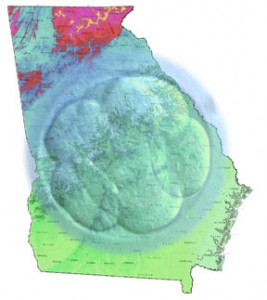 Georgia was the first state to pass an embryo adoption bill (2009) that provided an opportunity for intended parents to go through an adoption procedure to obtain the right to gestate a thawed frozen embryo. Other states, such as Florida, have embryo donation statutes on its books, which allow a couple to receive a donation from another (open or anonymous) of a frozen embryo. While the end results may appear to be the same, the road getting there and implications of using the different phrases are vastly different.
Georgia was the first state to pass an embryo adoption bill (2009) that provided an opportunity for intended parents to go through an adoption procedure to obtain the right to gestate a thawed frozen embryo. Other states, such as Florida, have embryo donation statutes on its books, which allow a couple to receive a donation from another (open or anonymous) of a frozen embryo. While the end results may appear to be the same, the road getting there and implications of using the different phrases are vastly different.
The Georgia law, which was championed by Right to Life groups, treated a frozen embryo in much the same way as it would a child already born. The new law and procedures mimic that of other adoption provisions and gives the frozen embryo many of the same rights and considerations of a born child, including using a “best interest of the child” standard in the adoption analysis. This philosophy is consistent with the concept that a child’s rights (as compared to the mother’s) begins at conception rather than birth and has implications in the abortion-right to choose/right to life arguments ongoing disagreements and potential laws expressing same.
Florida and many other states have historically treated frozen embryos as the property of the parents, who have the right to donate or dispose of the frozen embryos as they saw fit. The recipients received the frozen embryos as property under the respective laws of their state and could use or dispose of the frozen embryos as they saw fit. This process allowed for freer access to unused frozen embryos and discouraged the abandonment/discarding of them.
The agenda of the Georgia law was not necessarily meant to “protect” the frozen embryos but was designed to advance a political agenda of creating additional barriers to a women’s right to choose (i.e. restrict abortion) and to further control the reproductive rights of patients by discouraging the use of advanced reproductive techniques, such as in vitro fertilization as well as the cryopreservation and storage of excess embryos.
Up to now, there have been few attempts to export the Georgia concept in other states. This is perhaps due to the country’s economic challenges, but this possible trend needs to be closely monitored. The implications of providing “personhood” to embryos are far and wide and the Georgia statute is one of the first successful salvos to be launched with others most certainly to follow. Mississippi is currently targeted for a constitutional amendment to give embryos personhood and many other states are next in line for challenges that may significantly impair the health and reproductive care of women.
Harold Eskin, Esq.
www.LegalSurrogacy.com
HalEskin@LegalSurrogacy.com
1420 SW 47th Street
Cape Coral, FL 33904
239-549-5551
References:
Georgia Statute:
http://statutes.laws.com/georgia/title-19/chapter-8/article-2/19-8-41Florida Statute:
http://www.leg.state.fl.us/Statutes/index.cfm?App_mode=Display_Statute&Search_String=&URL=0700-0799/0742/Sections/0742.14.html
Hope & Will Have a Baby – Book review by Craig R. Sweet, M.D.
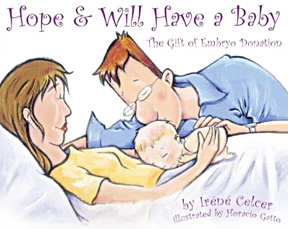 This book is one of a collection of third party conception children’s books written by the same author and illustrator and published by Graphite Press, copyright of 2006. It is one of the only books I have seen for children conceived though embryo donation.
This book is one of a collection of third party conception children’s books written by the same author and illustrator and published by Graphite Press, copyright of 2006. It is one of the only books I have seen for children conceived though embryo donation.
Ms. Celcer is a mental health professional that feels it is important to be up front in telling the children of embryo donation about their origin. In her forward, she cites the past secrets in adoption causing harm. She goes on suggesting that-
- • Children somehow sense the secrets
- • The failure to divulge may create shame in the parents of donated embryo offspring
- • Failure to tell a child results in a loss of pride of their beginnings
This book is to be used to tell the children about their loving conception while trying to manage the complex emotions of the parents.
Through the eyes of Hope and Will, a young married couple in love, the book explains what a “special place” the uterus is and how  embryos are created. Hope and Will experience infertility, depression and probably some grumpiness (can you imagine?). They seek help through Dr. Quest, who gives Hope tablets, pills and shots, but to no avail. Embryo donation is discussed, explaining anonymous and open options in simple and easy to understand terms.
embryos are created. Hope and Will experience infertility, depression and probably some grumpiness (can you imagine?). They seek help through Dr. Quest, who gives Hope tablets, pills and shots, but to no avail. Embryo donation is discussed, explaining anonymous and open options in simple and easy to understand terms.
Hope and Will conceive though embryo donation. The author emphasizes love, pride and excitement when the delivery finally takes place. Hope and Will are clearly grateful to their donor couple whom they have never met. Enough information is provided about the donors to help the child understand his origin.
While perhaps a little complex for a young child of four or five, the book might work quite well for a slightly older child. The pictures are wonderful and the emphasis on love and the desire to have a child by whatever means necessary is well done. I have always suggested that if parents tell the child, they should highlight their tremendous desire to have and love that child, as well as how hard they worked to bring such a wonderful child into their home.
Disclosure in embryo donation is a periodic theme of a number of my blogs. Adoption is clearly different than embryo donation. Adoption tends to be well accepted by most of the world’s religions. If embryo recipients tell friends, family and their donor-conceived offspring, there may be significant repercussions. Will the recipients and offspring be criticized, ostracized or, even, excommunicated by these same people or by their own religion?
Unfortunately at this time, I simply don’t believe we have enough data to make a clear recommendation to embryo recipients although there is wonderful ongoing research that will hopefully help to answer this question. For now, extrapolating what we have learned from adoption may simply not be appropriate for embryo donation, although passions on both sides of this issue 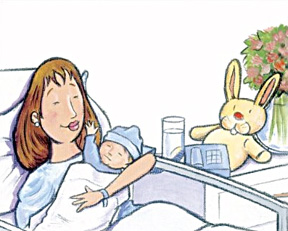 abound. The long-term consequences of secrecy vs. total openness to friends, family and the child of embryo donation are essentially unknown and I feel this decision needs to be made carefully with consultation with skilled mental health professionals (and Ms. Celcer is one of them), reproductive endocrinologists and perhaps, most importantly, recipients that have already traveled this journey.
abound. The long-term consequences of secrecy vs. total openness to friends, family and the child of embryo donation are essentially unknown and I feel this decision needs to be made carefully with consultation with skilled mental health professionals (and Ms. Celcer is one of them), reproductive endocrinologists and perhaps, most importantly, recipients that have already traveled this journey.
Selling for about $20 at Barnes & Noble, the purchaser should know this is a paperback and only 28 pages. The reader is clearly paying for the content and not story length or volume.
I highly recommend this book for those parents who decide to tell their child they were conceived through embryo donation, although the story line may need to be changed for single women and gay and lesbian couples. For the lucky parent(s) of embryo donation, this is a fairly good place to start if disclosure is the path they choose to follow.
Craig R. Sweet, M.D.
Founder, Medical & Practice Director
Embryo Donation International
Disclosure Issues in Embryo Donation: Summary Comments
Brief Introduction
Embryo donors and recipients are faced with a number of life-changing decisions as they contemplate disclosure. This is the final segment of a five-part series summarizing the complex decisions surrounding the disclosure of the genetic origins of embryo donor-conceived individuals to family, friends and the offspring themselves.
What are some of the questions that embryo donors and recipients must explore before deciding to disclose or not?
Embryo donors must decide if they want a relationship with the donor-conceived individual being raised by another family. Are the donors willing to disclose their donation of embryos, which may have taken place years ago, to friends and family, including their existing children? At what age would they want the donor-conceived individual to contact them?
Recipients need to ask related questions about whether they should tell their embryo donor-conceived children about their origins. If they want to do so, when should they tell and what information should they share? Are the recipients comfortable letting their family members and friends know of their infertility history? Will the recipients and offspring be criticized, ostracized or, even, excommunicated by these same people or by their religion? Are they comfortable with their child contacting and potentially having a relationship with the embryo donors and their blood siblings?
Can an understanding of adoption disclosure be used in the world of embryo donation?
It is understandable, but potentially misguided, that some professionals believe embryo donation is identical to the adoption of a live child. I have written about this topic before. While the American Society for Reproductive Medicine (ASRM) states that the term “embryo adoption” should not be used, some facilities do so openly.
However, regardless of the legal differences, there also are a number of very practical differences:
- Because the embryo recipient carries and delivers the child, her pregnancy may look natural, making disclosure by the recipients optional. Adoption is much more difficult to hide.
- Disclosure of the embryo donation process may not be well accepted by friends, family and some religions. While not universally accepted, adoption may be better tolerated.
- As with sperm donation, single women and lesbian couples who conceive with donated embryos are more likely to disclose because the fatherhood issue inevitably arises. Heterosexual couples, however, are the least likely to disclose.
How often is disclosure currently revealed?
 There is a growing body of data that suggests only a minority of the embryo donor-conceived children are told of their origins. In an English study of 17 embryo donation families with donor offspring between five and nine years old, only 18% of the recipient parents had told their children (MacCallum F. et al. 2008). An additional 24% planned on telling, 12% were undecided and 47% stated they would not tell. The reality is that many of those who planned on telling or were undecided may eventually decide against disclosure as the child ages and enters the more difficult years of adolescence. This seemed to be different than other donor procedures where 46% of donor sperm insemination parents and 56% of egg donation parents planned to disclose (Golombok S, et al. 2004).
There is a growing body of data that suggests only a minority of the embryo donor-conceived children are told of their origins. In an English study of 17 embryo donation families with donor offspring between five and nine years old, only 18% of the recipient parents had told their children (MacCallum F. et al. 2008). An additional 24% planned on telling, 12% were undecided and 47% stated they would not tell. The reality is that many of those who planned on telling or were undecided may eventually decide against disclosure as the child ages and enters the more difficult years of adolescence. This seemed to be different than other donor procedures where 46% of donor sperm insemination parents and 56% of egg donation parents planned to disclose (Golombok S, et al. 2004).
Why has anonymity been the norm in embryo donation?
The concept of anonymity in egg/sperm/embryo donation has its roots in the physician/patient relationship to meet a series of needs (Daniels K. 1997). To assume that it should be discontinued for everyone doesn’t take into account the ethical, social and religious circumstances of different patients.
Since the medical profession assumes parents are able to make, without question, thousands of different choices for their children, assuming they are incapable of making a decision, such as disclosure which affects both the child and parents, is simplistic and rather paternalistic.
Why not disclose?
Let’s face it; there might indeed be a lack of societal approval of offspring who originated from donor material. Many people are judgmental regarding embryo donation, especially in cultures and religions that emphasize genetic inheritance. Recipients have legitimate reasons to fear the potential damage to themselves and their children from other people’s negative reactions, social stigma and resulting isolation (Shehab D, et al. 2008).
Some of the reasons recipients do not want to disclose include protecting their children  and family relationships from rejection, not feeling a need to disclose or uncertainty about how to approach the matter (MacCallum F, et al. 2007, Jadva V, et al. 2009 & Mahlstedt PP, et al. 2010). Disclosing also will broadcast their infertility issues, which they may have kept quite private in the past (Klock SC. 1997). Another common reason given for not disclosing is fear that they as non-genetic parents will be rejected. Actually, there is no data to support or deny this last very human concern.
and family relationships from rejection, not feeling a need to disclose or uncertainty about how to approach the matter (MacCallum F, et al. 2007, Jadva V, et al. 2009 & Mahlstedt PP, et al. 2010). Disclosing also will broadcast their infertility issues, which they may have kept quite private in the past (Klock SC. 1997). Another common reason given for not disclosing is fear that they as non-genetic parents will be rejected. Actually, there is no data to support or deny this last very human concern.
Unlike adoption, it is doubtful that the offspring of embryo donation will have to resolve the “history of rejection” unlike adopted children who were separated from their birth parents (Widdows H, et al. 2002). Families created through embryo donation are a product of a loving gift and not formed from perceived rejection. Therefore, some of the motivation to disclose in adoption simply does not exist in embryo donation.
Why should parents disclose?
The most common reason for embryo recipients to disclose is a fear that the child will accidently discover the facts at a later date (MacCallum F, et al. 2007). One study of adult offspring of sperm donation found that about 1/3rd of the individuals learned of their donor origins after an argument, from another person or they just figured it out themselves (Mahlstedt PP, et al. 2010). In a recent study, about 10% (47/458) of the sperm donor offspring who were searching for their donors and half-siblings found out by accident (Beeson DR, et al. 2011). They were apparently told by siblings, family or friends; discovered paperwork or inheritable medical issues that their recipient parents did not have; inadvertently overheard their parents talk about it; or it was revealed as a consequence of divorce. Recipients who tell family and friends but not the child are asking for future problems. When examining these two studies, it is clear there is a reasonable risk that the offspring will discover their origins, even under the best of circumstances. It also is important to realize that sperm, egg and embryo donation procedures are different when analyzing the study results.
There are some embryo donation recipients who feel it is simply best to not have secrets in the home. Others believe the embryo donor-conceived children have a moral right to know their origins. Some feel it is important that the children understand and connect to their genetic inheritance beyond the family who raised them.
What should be disclosed?
There are three decision levels in disclosure: 1) To decide to disclose, 2) To decide what age to disclose, and 3) To decide what information is to be provided. One can simply tell the child he or she was embryo donor-conceived but the child is certain to have more questions. At the very least, I believe providing the donors’ photographs (when they are available) as well as their medical, surgical, psychiatric, family and social histories are needed. However, providing actual identifying information needs to be handled carefully and thoughtfully.
When should disclosure take place?
Disclosure early in the child’s development, certainly before age ten, would seem to be ideal. Some mental health professionals (MHP’s) feel it should be discussed as early as possible. If disclosure occurs in adolescence or later, young adults may feel mistrust, alienation, identity confusion, frustration and even hostility towards their family (Ethics Committee, 2004 & Mahlstedt PP, et al. 2010). About 46% of donor sperm offspring who were told at the age of 18 or older stated they were confused. It is probably best to tell the child before the age of 10 than wait until later where there is a doubling of the number of children who were unsettled with the information.
Why do embryo donor-conceived individuals want to know their genetic origins?
Many embryo donor-conceived individuals may be curious about their donors’ physical characteristics and original motivation to donate, as well as possess a desire to know their genetic identity and, perhaps, provide an ancestral history for their own children. (Ravitsky V, et al. 2010 & Mahlstedt PP, et. al. 2010).
For many, the search for their donors may go well beyond just seeking simple information. In two recent studies of offspring searching for their donor sperm fathers, 80-88% were intensely curious about their donor and wanted to contact him. Up to one-third desired an actual relationship with the sperm donor (Beeson DR. 2011 & Mahlstedt PP, et al. 2010). It should be understood, however, that studies such as these might not represent a balanced patient sample. Only offspring searching for information contributed to those studies. There wasn’t a practical way to capture the opinions of those offspring who were not part of the Internet support groups, who may indeed represent a very silent majority.
Do embryo donor-conceived offspring have the right to know their origins?
Many donor-conceived individuals feel they have a right to know their genetic origins (Shehab D, et al. 2008). Embryo donors and recipients, who may prefer an anonymous process, have rights that compete with those of the donor-conceived individuals. Embryo donors and recipients have legal rights that are in direct contrast to the offspring’s moral view that family secrets shouldn’t be kept. There is no easy way to reconcile these contrasting legal rights and moral perspectives. Most agree, at the risk of offending those who feel differently, that in a society ruled by law, a legal right ultimately trumps a perceived moral right. Thus, the legal rights of donors and recipients continue to prevail in this country.
Should disclosure be mandated?
There is a stronger preference to discard or abandon the embryos than there is to donate them. Placing any impediments on embryo donation, such as mandating disclosure, may not only reduce the number of embryos donated but will almost certainly result in a greater number of embryos discarded or abandoned. I cannot imagine the well-meaning individuals who are asking for mandated disclosure would want the loss of embryos and potential families to be an almost certain unintended consequence.
Parents who used donor material feel the decision to disclose is private, highly personal and should be left to the discretion of the individual families and not regulated in any way (Shehab D, et al. 2008). A dual-track of disclosure/nondisclosure system will most meet the needs of everyone (De Jonge C, et al. 2006). We need to educate, guide and support, but not force these processes.
What happens to children who learn or don’t learn about their origins?
Interestingly, children do not seem to be harmed if disclosure does not take place.
Warm parent-child relationships and positive child development have been documented, although few of these donor embryo-conceived children have yet entered adolescence (Golombok S, et al. 2006). While more data and follow up studies are certainly needed, embryo donation children do not seem to be at increased risk for developing psychological problems during early and middle childhood, regardless of disclosure decisions. Supporting these findings about early disclosure, neither the children nor the family seem to be harmed (MacCallum F, et al. 2007 & 2008). While not definitive, the research we have so far suggests that disclosure decisions, either for or against, will not cause irreparable harm to the embryo donor-conceived individuals or the parents who raised them.
Interestingly, research shows that embryo donation families are more child-centered than adoptive and, even, other IVF families, regardless of their disclosure status (MacCallum F, et al. 2007 & 2008). This may be due in part to the recipients’ older age and maturity compared to younger IVF and adoptive parents. Embryo donation-conceived children are tremendously appreciated, greatly desired and hard fought for by their parents. This should give embryo donors confidence that donor-conceived offspring will be well cared for by wonderful recipient families.
What should be considered if embryo donor-conceived individuals meet the donors?
If donor-conceived individuals connect their donors and/or blood siblings, it is important that everyone’s expectations be reasonable. Members of donor-linked families may have a significant mismatch regarding their levels of hope and expectation about contact (Scheib JE, et al. 2008). Some of the participants may have a tendency to romanticize the first meeting and future relationship. The participants should move slowly and carefully, without inappropriate expectations.
It is exceedingly important that the relationship between the parents who raised the child and the embryo donor-conceived offspring not be harmed, as this is the basis for the child’s stability and home life. The fear that this relationship will be damaged is one of the main reasons recipients prefer to not disclose, so it must be protected.
Long-term data regarding the relationships between embryo donors and embryo donor-conceived individuals is not yet available, so we simply are unable to tell any of the participants what the outcome may be (Grotevant HD, et al, 2008). The parents who raised the donor-conceived child may feel threatened by the relationship between the donors and offspring. It would be irresponsible for us as clinicians to assume that all will go well. We must remain cautious and counsel our patients carefully and individually until we have more information to guide them.
Can recipients get help in deciding if disclosure should take place?
Consultation with a mental health professional (MHP) regarding disclosure is strongly encouraged but the counselor must understand the subtle differences between embryo donation and adoption, where disclosure is the norm. Neutrality is required and finding a skilled and experienced MHP is important. Many patients resent direct suggestions about disclosing and far prefer a discussion that examines their own needs and perspectives (Klock SC, 1997). In reality, it is really not appropriate to give a uniform recommendation that does not take into account the personal, ethical and religious views of the embryo recipients.
Even more important, embryo recipients may want to hear from other recipients, people who have worked through the issues or are struggling with making the decision (Klock SC, 1997).
In our three recent surveys examining the perspectives of potential embryo donors, recipients and offspring, there were a few consistent findings:
- From the embryo donor perspective, the majority polled desired an open process.
- From the embryo recipient perspective, the majority polled desired anonymity.
- The majority of potential embryo donors and embryo recipients would disclose to their friends and family.
- If open-identity was available, the majority felt information should be shared and potential contact be made before the age of 18, which may differ in adoption proceedings.
Are reproductive facilities prepared for disclosure?
A medical providers’ first reaction will be to protect their patients: the embryo donors and recipients. State and federal statutes protect confidentiality and clear consent must always be provided before medical/identifying information is released to a third party. The reproductive facilities also will want to be insulated from any legal consequences should disclosure occur.
Some medical practices will be operationally challenged to have records available years after procedures are performed. Many states require that medical records be retained for seven years. The Federal Drug Administration (FDA) requires practices to retain for ten years the medical records of patients involved in third party conception, while the ASRM suggests the records be stored indefinitely. Being able to identify those particular charts from others that would otherwise routinely be discarded is a logistical challenge. In my practice, we color-code the charts involving any type of donor material, making them easy to pull and save.
I also feel embryo recipients have a responsibility to keep the information they were originally provided about their embryo donors protected and safe in case the practice’s medical records are ever lost or deleted.
Regardless, the facilities have a responsibility to assure charts are available and that systems are in place to make disclosure possible. Policies and procedures will need to be created so that they are ready when the requests come. Mirroring the adoption world in this instance may be of use.
How do recipients disclose?
Experienced MHP’s can provide invaluable assistance in helping embryo recipients present this  sensitive information. Reproductive endocrinologists, well versed in this topic, may also be very useful in deciding how and when to tell the children. Forums where parents can discuss these issues with other parents who have lived them also may be indispensible. While few books exist on the topic, I will be reviewing one quite soon that does. Please stay tuned.
sensitive information. Reproductive endocrinologists, well versed in this topic, may also be very useful in deciding how and when to tell the children. Forums where parents can discuss these issues with other parents who have lived them also may be indispensible. While few books exist on the topic, I will be reviewing one quite soon that does. Please stay tuned.
Using the following phrases and ideas in the discussion may be useful:
- We wanted you to be in our lives so much, we had to travel far and wide to find you.
- The people who gave us their embryos, which included you, gave us the most wonderful gift in the world. They loved you so much that they wanted you to enjoy life with us.
- I got to carry and protect you, giving you all the love I could.
- Remember that eggs, sperm and embryos don’t make a family any more than bricks make a happy home. What makes a family is how we support and love each other.
A good way to start this conversation is by emphasizing love, your commitment to find them, the amount of time, effort and emotion you invested in bringing them into the world, and the fact that genetics doesn’t necessarily make a family. I’m sure MHP’s will offer recipients some great phrases and ideas, which I will encourage that they share with us on this blog.
What are the long-term consequences of disclosure?
Research is needed to find out more about long-term disclosure outcomes. It is difficult to ascertain how children are fairing who are not told about their origins fare because these individuals are not readily accessible to research. Also, what happens over time with open donation is largely unknown. I feel it is unrealistic to assume that everyone will live together as one big happy family. I suspect, however, that the donor-conceived children will benefit in establishing connections with blood siblings.
If disclosure occurs and the offspring are destined to contact their genetic parents, their reunion should not be romanticized. They will not necessarily be welcomed with open arms up to two decades later by the donors. In fact, we don’t have any idea how well or how disruptive these reunions will be. Once again, research is desperately needed.
Is there a disclosure compromise available?
The idea of open-identity is a fascinating concept for embryo donation. This would allow donors to be contacted if the recipients eventually disclose the genetic origins to their donor-conceived offspring. According to our recent surveys, most respondents wanted disclosure with open-identity to occur before the children turn 18 and have the ability to contact the donors. But what harm will come to the child if disclosure and contact are done earlier in the formative years? Would there be some advantages to knowing earlier rather than later in adulthood?
It would seem that if recipients are disclosing for the sake of the child, it may truly be best to allow disclosure and open-identity earlier rather than later. I hope to pose this question to MHPs in the months to come.
In summary
I feel it is far better that we design programs with open-identity options but not legislate them. Legislation, especially if it is retroactive, will inject uncertainty about every current rule governing the practice of egg/sperm/embryo donation (Guido P, 2001). Legislation will do more to shut donation processes down than any other development. I understand there are some donor-conceived individuals who feel that all information should be open to review, but past contracts were doubtfully formulated that way. Although unpopular with some, the perceived rights of the donor offspring should not be allowed to circumvent the true legal rights of the donors and recipients.
At a recent ASRM meeting, some MHPs and reproductive attorneys lamented that anonymous embryo donations are allowed to continue. I explained that if they want to change physicians’ and patients’ perspectives on anonymity, they would only succeed with data showing the long-term benefits of disclosure. Until that time, clinicians and patients alike will be hesitant to adopt a stance that is not yet supported by unbiased research. We should tread lightly and make very few assumptions when it comes to issues so important as disclosure or we risk doing harm to our patients. We all need a bit more information in caring for our embryo donors and recipients. We must never forget, however, that embryo donation-conceived individuals, who were never our actual patients, and are still owed thoughtful care and tremendous compassion. We must keep an open mind and learn from their perspective.
There will always be a group of patients who will want anonymity and we all need to respect their wishes. Everyone involved in this debate needs to take a breath and step back. I grow weary of a very vocal group of patients who believe their way is the single right way. This is not a black and white issue. We should instead see the disclosure controversy in shades of grey. Compromise these days seems to be viewed as form of weakness in our country’s politics. This country was founded on the basis of choice and I feel strongly that we should design systems that will allow for choice while educating the participants of embryo donation about their options and the potential results of both disclosure and non-disclosure to embryo donor-conceived individuals. It is our responsibility.
As always I welcome a respectful dialogue, especially from those who disagree. I look forward to reviewing research studies that will guide all of us so we may better counsel embryo donors, embryo donor recipients and especially the embryo donor-conceived individuals, who remain the final focus of this entire discussion.
Craig R. Sweet, M.D.
Reproductive Endocrinologist
Founder, Medical & Practice Director
Embryo Donation International
Info@EmbryoDonation.com
www.EmbryoDonation.com
Associated Blog Segments:
- Introduction: Disclosure Issues in Embryo Donation
- Embryo Donor Perspective
- Survey Results: Imagine you are an Embryo Donor
- Blog: Disclosure Issues From the Perspective of the Embryo Donor (Part 1 & Part 2)
- Embryo Recipient Perspective
- Survey Results: Imagine you are an Embryo Recipient
- Blog: Disclosure Issues From the Perspective of the Embryo Recipient (Part 1 & Part 2)
- Embryo Donor Offspring Perspective
- Survey Results: Imagine you are an Embryo Donor Offspring
- Blog: Disclosure Issues From the Perspective of the Embryo Donor Offspring (Part 1 & Part 2)
Registry Links:
- The Donor Sibling Registry: https://www.donorsiblingregistry.com/
- UK Donor Link: http://ukdonorlink.org.uk/ (funding uncertain)
- Western Australia’s Voluntary Register for Donors, Offspring and their Families: http://www.voluntaryregister.health.wa.gov.au/home/
- BCdonorconception, British Columbia donor offspring: http://groups.yahoo.com/group/BCdonorconception/
Donor Sperm Facility Registries:
- California Cryobank’s Sibling Registry: http://www.sibling-registry.com/
- Fairfax Cryobank: Donor Sibling Groups: http://www.donorsiblinggroups.com/Home_Page.html
General Third Party Conception Support:
- Donor Conception Support Group: http://www.dcsg.org.au/
- PCVAI, People Conceived via Donor Insemination: http://groups.yahoo.com/group/PCVAI/
- International Donor Offspring Alliance: http://www.idoalliance.org/
- The Donor Conception Support Group of Australia Inc: http://www.clan.org.au/dcsg/index.html
- Canadian Donor Offspring: http://www.canadiandonoroffspring.ca/
- Germany: http://www.spenderkinder.de/
References:
Beeson DR, Jennings PK, Kramer W. Offspring searching for their sperm donors: how family type shapes the process. Hum Reprod. 2011 Sep;26(9):2415-24.
Daniels K. The controversy regarding privacy versus disclosure among patients using donor gametes in assisted reproductive technology. J Assist Reprod Genet. 1997 Aug;14(7)-373-5.
De Jonge C, Barratt CL. Gamete donation- a question of anonymity. Fertil Steril. 2006 Feb;85(2)-500-1.
Klock SC. The controversy surrounding privacy or disclosure among donor gamete recipients. J Assist Reprod Genet. 1997 Aug;14(7)-378-80.
Ethics Committee of the American Society for Reproductive Medicine. Informing offspring of their conception by gamete donation. Fertil Steril. 2004 Sep;82 Suppl 1-S212-6.
Ethics Committee of the ASRM. Informing Offspring of their conception by gamete donation. Fertil Steril 2004;81(3):527-31.
Golombok S, Lycett E, MacCallum F, Jadva V, Murray C, Rust J, Abdalla H, Jenkins J, Margara R. Parenting infants conceived by gamete donation. J Fam Psychol. 2004 Sep;18(3):443-52
Golombok S, Murray C, Jadva V, Lycett E, MacCallum F, Rust J. Non-genetic and non-gestational parenthood: consequences for parent-child relationships and the psychological well-being of mothers, fathers and children at age 3. Hum Reprod. 2006 Jul;21(7):1918-24.
Grotevant HD, Wrobel GM, Von Korff L, Skinner B, Newell J, Friese S, McRoy RG. Many Faces of Openness in Adoption: Perspectives of Adopted Adolescents and Their Parents. Adopt Q. 2008 Jul 1;10(3 & 4):79-101.
Guido P. The reduction of sperm donor candidates due to the abolition of the anonymity rule: Analysis of an argument. J Assist Reprod Genet. 2001 Nov;18(11)-617-22.
Jadva V, Freeman T, Kramer W, Golombok S. The experiences of adolescents and adults conceived by sperm donation: comparisons by age of disclosure and family type. Hum Reprod. 2009 Aug;24(8):1909-19.
Klock SC. The controversy surrounding privacy or disclosure among donor gamete recipients. J Assist Reprod Genet. 1997 Aug;14(7)-378-80.pdf
MacCallum F, Golombok S, Brinsden P. Parenting and child development in families with a child conceived through embryo donation. J Fam Psychol. 2007 Jun;21(2):278-87.
MacCallum F, Keeley S. Embryo donation families: a follow-up in middle childhood. J Fam Psychol. 2008 Dec;22(6):799-808.
Mahlstedt PP, LaBounty K, Kennedy WT. The views of adult offspring of sperm donation: essential feedback for the development of ethical guidelines within the practice of assisted reproductive technology in the United States. Fertil Steril. 2010 May 1;93(7):2236-46.
Ravitsky, V. & Scheib, J.E. (2010). Donor-conceived individuals’ right to know. Hastings Center Bioethics Forum 2010;40:(4).
Scheib JE, Ruby A. Contact among families who share the same sperm donor. Fertil Steril. 2008 Jul;90(1):33-43.
Shehab D, Duff J, Pasch LA, Mac Dougall K, Scheib JE, Nachtigall RD. How parents whose children have been conceived with donor gametes make their disclosure decision: contexts, influences, and couple dynamics. Fertil Steril. 2008 Jan;89(1):179-87.
Widdows H, MacCallum F. Disparities in parenting criteria: an exploration of the issues, focusing on adoption and embryo donation. J Med Ethics 2002;28:139-42.
Disclosure Issues In Embryo Donation: A Five Part Series
Introduction
Embryo donors and recipients are faced with a number of complex decisions. Embryo donors first have to make the difficult decision about the fate of their cryopreserved embryos. If they are kind and generous enough to choose embryo donation, at EDI they must next decide what type of donation process they prefer:
- Anonymous Embryo Donation: Best for the donors who desire closure following donation.
- Approved Embryo Donation: Good for donors who want to learn about the recipients through a mental health professional’s report that excludes any identifying information.
- Open Embryo Donation: This option is best for the embryo donor who wants to form a relationship with the recipients. This process includes legal contracts, mental health professional interviews, physical exams and laboratory evaluations.
Embryo recipients must also choose the type of donation process they prefer. They must pay additional fees as the complexity of  the donation process increases. Though the recipients may not realize this at the time, choosing between anonymous and open procedures begins to form the decisions about disclosing the children’s origins to the offspring themselves. The decision whether or not to tell the embryo donor offspring of their genetic origins is a complicated and important issue.
the donation process increases. Though the recipients may not realize this at the time, choosing between anonymous and open procedures begins to form the decisions about disclosing the children’s origins to the offspring themselves. The decision whether or not to tell the embryo donor offspring of their genetic origins is a complicated and important issue.
The goal of this five-part series is to explore the complex issues surrounding the decision to disclose the genetic origins of embryo donor offspring to family, friends and the children themselves. This multifaceted decision requires our trying to understand the perspectives of the various participants in the embryo donation process, namely the embryo donors, the embryo recipients and the offspring themselves.
For example, if you were an embryo donor, would you want to have a relationship with a child who was being raised by another family? If so, at what age would you want them to contact you? If you were an embryo recipient, would you tell friends, existing children, extended family and the children themselves that their genetic origins were from embryo donors? If so, at what age would you tell the children? Would you want them to have a relationship with the embryo donors? And finally, if you were the product of embryo donation, would you want to know who your genetic parents are? When would you want to be told? Would you seek a relationship with the donors and their children, your genetic brothers and sisters?
This is a sensitive topic and, quite plainly, it needs to be discussed carefully, sensitively and openly.
How We Will Start
To make this discussion as interesting and as current as possible, I am asking the reader to complete three brief surveys. The first survey will ask questions pertinent to the perspectives of embryo donors, the second will focus on embryo recipients and the final one will probe how children borne through this unique reproductive option might feel. Each survey will be available for completion for about 10 days.
You will find the survey on this link on Survey Monkey. It only takes a few minutes to complete. We consider your input invaluable to help us understand this complex topic.
Blog: Introduction To Disclosure Issues (This one)
Survey: “Imagine You Are An Embryo Donor”
Blog: Results of “Imagine You Are An Embryo Donor” survey and discussion about “Disclosure Issues From the Perspective of the Embryo Donor”
Survey: “Imagine You Are an Embryo Recipient”
Blog: Results of “Imagine You Are an Embryo Recipient” survey and discussion about “Disclosure Issues From the Perspective of the Embryo recipient”
Survey: “Imagine You Are an Embryo Donor Offspring”
Blog: Results from the “Imagine You Are an Embryo Donor Offspring” survey and discussion about “Disclosure Issues From the Perspective of the Embryo Donor Offspring”
Blog: “Summary Comments On The Embryo Donation Disclosure Issues”
Please ask your family, friends and other interested parties to complete the survey and add their comments to the blogs. If you wish to be notified of future blogs, either please subscribe to our blog RSS or like the EDI Facebook page.
Thank you!
Please visit and complete our survey here:
Next Month:
Please be sure to watch for our next blog that will be titled, “Embryo Donation Disclosure Issues From the Perspective of the Embryo Donor”.
P.S. We’ll also be participating in the upcoming RESOLVE teleseminar on the topic of embryo donation. Please join us on September 15th at 9:00 p.m. EST.
Why the Catholic Debate Over the Morality of Saving Frozen Embryos Misses Some Important Points

By Dr. Craig R. Sweet
Medical & Practice Director
Founder, Embryo Donation International
I have welcomed and watched for some time the debate within the Catholic Church about the appropriateness of Catholics “saving” frozen embryos, which is a discussion that has seen a recent resurgence. I admire both sides of the debate: those who are interpreting steadfastly the teachings of the Church regarding in vitro fertilization, as well as those good people who want to give frozen embryos a chance of life.
Didn’t the Vatican’s Dignatias Personae settle the moral issue?
The 2008 Vatican document Dignatias Personae (The Dignity of a Person), which was intended to provide updated directives on biomedical ethical controversies, may not have settled this moral issue to the satisfaction of all. Because the Catholic Church believes in unconditional respect for all human life from the moment of conception, to some, these teachings seem to be at odds with Catholics who want to save frozen embryos. Both sides, however, are missing an important point.
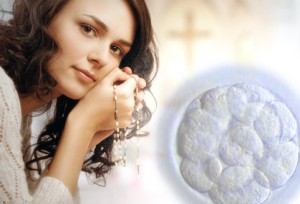 Why some believe embryo donation/adoption is morally wrong.
Why some believe embryo donation/adoption is morally wrong.
Let’s start with the perspective from those who feel it is morally wrong for Catholics to participate in IVF, embryo donation or embryo adoption. While not an expert in any aspects of Catholic theology, I will try to list what I believe are the important talking points:
- The Catholic Church feels IVF separates conception from the immediate act of sexual union between spouses while also improperly treating life as a commodity. IVF, therefore, is morally wrong and using fresh or frozen embryos created from such an act cannot be condoned or justified.
- A husband has a spousal right within the marital bond to his wife’s body and no one but the husband should impregnate his wife. In mutual respect, their bodies belong to each other and no other.
- Gestational surrogacy with donated/adopted embryos violates the covenant of marriage, as these pregnancies are not conceived through a natural act of conjugal love.
Some believe that IVF is morally wrong so using frozen embryos created via IVF cannot be justified.
Why some believe receiving a donated/adopted embryo is morally correct.
Next, let me next provide some of the arguments from those who feel that receiving donated embryos or gestating adopted embryos is morally correct:
- Keeping the embryos frozen indefinitely is an ongoing injustice and affront to the embryo’s dignity.
- Accepting donated/adopted embryos is similar to the adoption of a child, which is certainly encouraged by the church. Think of it as a “prenatal adoption”.
- A women who adopts and is able to breast feed a child, which is allowed by the Church, is providing nourishment. One can then surmise that carrying a donated/adopted embryo in the womb, thereby providing nourishment is no different.
- Surrogacy, under extreme circumstances, may be morally correct when a woman or the child would be severely harmed if the woman tried to carry and deliver a pregnancy.
- Pregnancy occurs without having sex with another, so the marital bond remains intact.
- Rescuing and receiving embryos ultimately protects the sanctity of life.
Others believe that life is sacred and that Catholics should be allowed to save frozen embryos.
Simply stated, those that believe it is immoral to receive donated/adopted embryos do not feel the ends justify the means when the means used, i.e., in vitro fertilization, is considered immoral. Those who believe gestating a donated/adopted embryo is moral ultimately feel the ends justify the means when the ends result in “saving” frozen embryos and building a happy family. This dilemma has divided a number of devout Catholics onto different sides of the debate.
What points are being missed in the debate?
Those against embryo donation/adoption also fear that the IVF industry will boom trying to resupply embryos. Nothing could be further from the truth. Frozen embryos are donated reluctantly with fewer than 10% donated to patients in need. Patients create embryos to build families of their own, not with the intent to donate or adopt. A boom will never materialize and is not a realistic concern.
Some also are concerned that embryos would be created and sold to the highest bidder. Embryos must always be created with patients in mind. If not, we could potentially have banks of unclaimed embryos, created from both donor eggs and donor sperm waiting to be chosen. Potential human life is never to be bought or sold or should be left unclaimed waiting somewhere in a liquid nitrogen tank. The creation and sale of embryos is clearly, no matter what your religion, ethically inappropriate and utterly unacceptable.
One could also argue that fertile Catholics, with potentially large families, shouldn’t have priority to the donated embryos over infertile couples who have never had a family. I can tell you this is an important point to hopeful embryo recipients who are desperately searching for the limited number of donated embryos and a chance to even have a single child.
What is the most important point I feel is being missed in the Catholic debate?
While it is wonderful to watch the Catholic Church discuss these issues in ways it has not done before, the truth is that they don’t need to have such angst. The unfortunate reality is that the number of potential (non-Catholic) recipients far outstrips the number of embryos available. Frozen embryos, which are not used by those that created them, don’t need to be saved; they simply need to be donated. There are literally thousands of recipients that will gladly take them without reservation. Nearly all donated embryos will find a home without good Catholics having to wrestle with this difficult moral decision.
I truly appreciate the conversation that wonderful Catholics have had within their Church regarding this issue. I have nothing but respect for those that are discussing their concerns. The sad truth is, however, that it is a moot point. From a practical perspective, we simply don’t have enough donated embryos to meet the current needs of the recipients who do not feel morally conflicted about the issue and who are not at risk from repercussions from a Church that maintains strong convictions. Perhaps if we significantly increase the number of embryos donated by decreasing the number abandoned or discarded, there would be a surplus of donated embryos and we would indeed need Catholics to rekindle the discussion.
To the good Catholics who are wrestling with this issue, feel free to keep the conversation going but be aware your participation, however welcome, thoughtful and well intended, is truly not needed to save the embryos you hold so dear. They are already spoken for.
Craig R. Sweet, M.D.
Reproductive Endocrinologist
Founder, Medical & Practice Director
Embryo Donation International
Info@EmbryoDonation.com
www.EmbryoDonation.com
References:
Gilbert, Kathleen. “Top Catholic Ethicists Duel over Frozen Embryo Adoption.” LifeSiteNews.com, US Edition. LifeSiteNews.com, 02 Aug. 2011. Web. 06 Aug. 2011. <http://www.lifesitenews.com/news/top-catholic-ethicists-duel-over-frozen-embryo-adoption>.
“Dignitas Personae (The Dignity of a Person).” United States Conference of Catholic Bishops. Department of Communications, United States Conference of Catholic Bishops. Web. 05 Aug. 2011. <http://www.usccb.org/comm/Dignitaspersonae/>.
[English/Spanish translations with other excellent pdf files]
Napier, Ph.D., Stephen, and John M. Hass, Ph.D., S.T.L. “Commentary on Dignitas Personae – The National Catholic Bioethics Center.” Home Page – The National Catholic Bioethics Center. The National Catholic Bioethics Center. Web. 03 Aug. 2011. <http://www.ncbcenter.org/page.aspx?pid=1010>.
Oleson C. Digitas personae and the Question of Heterologous Embryo Transfer. The Linacre Quarterly 2009;76(2):133-149.
